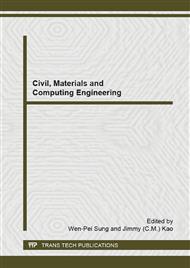p.1203
p.1208
p.1211
p.1216
p.1220
p.1224
p.1230
p.1233
p.1237
Study on the Improvement of Public Rental Housing Development and Operation Model Based on Full Life Cycle Theory
Abstract:
Public rental housing plays an important role in the construction ofsecurity housing system in our country, but in the current development andoperation mode, public rental housing project of its own financial viabilityCo., need the government to give large amounts of funds and policy support, thedependence is strong, is not conducive to sustainable development projects,limiting its security role play. In this paper, by using the life cycle costtheory, the construction of public rental housing life cycle cost model,analyze the existing problems in the development and operation mode, and thenputs forward the improvement direction of development and operation pattern,causes it to have certain financial viability, provide policy recommendationsfor the future development of China's public rental housing.
Info:
Periodical:
Pages:
1220-1223
Citation:
Online since:
December 2014
Price:
Сopyright:
© 2015 Trans Tech Publications Ltd. All Rights Reserved
Share:
Citation:


